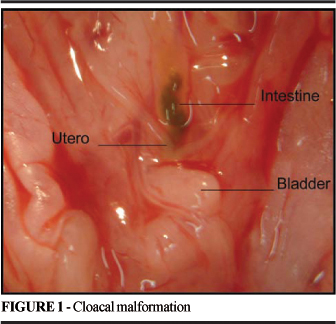PURPOSE: To evaluate an experimental model for anorectal anomalies and their principal associated malformations induced by ethylene thiourea (ETU). METHODS: Rat fetuses were utilized, divided into two groups: experimental group - fetuses from rats that received ETU on the 11th day of gestation at the dose of 125 mg/kg, diluted in distilled water to 1% concentration (12.5 ml/kg); and control group - fetuses from rats that received distilled water alone, at a volume of 12.5 ml/kg. On the 21st day of gestation, the animals were sacrificed by hypoxia in a carbon dioxide chamber, followed by laparotomy to remove the fetuses. These were initially examined externally to determine the sex and whether anorectal anomalies and malformations of the vertebral column and tail were present. Then, with the aid of microscopy, the fetuses underwent exploratory laparotomy to characterize the type of anorectal anomaly and investigate urological malformations. RESULTS: None of the fetuses in the control group presented anorectal anomaly, vertebral column malformation or urological structural alterations. In the experimental group, 71% presented anorectal anomaly, 80% presented vertebral column alterations and 35% presented urological alterations. CONCLUSION: The model described was shown to be easy to implement and presented results that allow its use in studying anorectal anomalies and associated malformations.
Anus imperforate; Ethylenethiourea; Rats













